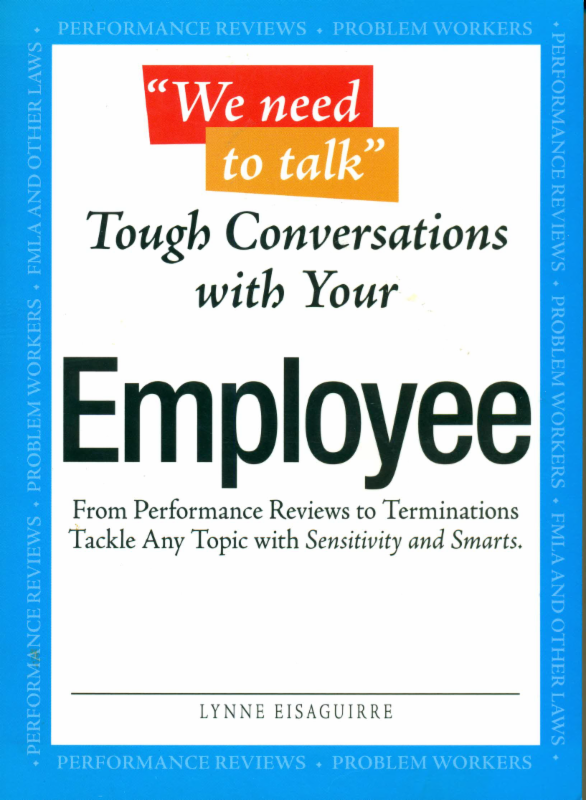|
What Do People Mean When They Say “I Agree”?
Leaders are frequently frustrated by conflicts that keep erupting, even when they are sure they have been resolved. You spend hours working with groups who are negotiating some thorny issue and give a sigh of relief when they finally all declare that they “agree” to a solution.
But what if their interpretation of what they mean by asserting “I agree” is different from what you think they mean? They may, for example, simply be agreeing to anything in order to just get out of the room or off a long phone call. Their statement of “I agree” could simply mean that they are sick of the discussion and will say anything to escape.
“…enthusiastic endorsement of the project may be essential, and you may have no idea whether you have that support or not.“
Likewise, saying “I agree” could mean that they enthusiastically endorse the proposal and will do anything to advance the cause, or it could mean that they don’t really like the proposal but won’t veto the result.
I once coached an executive, for example, who responded “okay” to most of my feedback. I danced along assuming that he admired my wisdom and suggestions, happy that my coaching was being appreciated. It took me some time to realize that to him, saying “okay” simply meant that he heard me, not that he was necessarily going to heed my advice.
Depending upon the issue, enthusiastic endorsement of the project may be essential, and you may have no idea whether you have that support or not.
What Should You Do?
When you are negotiating a truce among warring employees or seeking support from a team for a significant project, use the Variables of Agreement tool to make sure that you truly have the agreement you need. As you can see from the chart below, this graph helps a leader see where they stand in pictorial detail.
 I like to use a large version of this tool that we hang on the wall. The group then uses individual sticky notes to show where they fall in the discussion. Options range from enthusiastic endorsement to expressing a personal – rather than an organizational – objection to some plan, to outright veto. With this graphic representation, you can assess whether you have the support you need to proceed. I like to use a large version of this tool that we hang on the wall. The group then uses individual sticky notes to show where they fall in the discussion. Options range from enthusiastic endorsement to expressing a personal – rather than an organizational – objection to some plan, to outright veto. With this graphic representation, you can assess whether you have the support you need to proceed.
Some projects require a total buy-in of the group, for example, while with others, a simple majority vote is enough. Allowing participants to mark where they fall along that continuum allows more people to express what might be an unpopular opinion, even though they wouldn’t want to state their concerns out loud in front of the entire group.
 Did You Know Did You Know
All of our workshops on leadership, conflict and negotiation include a section and practice using the Variables of Agreement tool.
Call or write us at: 303-216-1020 or Lynne@workplacesthatwork.com
Learn more about our training offerings and check out our team members at:
Be sure to read Lynne’s books on Affirmative Action and Sexual Harassment.

|
 November 13, 2017
November 13, 2017 today is Martin Luther King day, it’s important to focus on our role in creating a better world.
today is Martin Luther King day, it’s important to focus on our role in creating a better world. If you are a leader, you have an obligation to intervene in the moment. If it is a large group, simply say that the comment or behavior is inappropriate and then speak to the individuals privately later on. Be clear about whether it is a violation of law, policy or values and document the discussion. Severe behavior should, of course, be reported to HR.
If you are a leader, you have an obligation to intervene in the moment. If it is a large group, simply say that the comment or behavior is inappropriate and then speak to the individuals privately later on. Be clear about whether it is a violation of law, policy or values and document the discussion. Severe behavior should, of course, be reported to HR.

 improving performance for future projects.
improving performance for future projects.



 With the plethora of complaints piling up against public men, what does the #MeToo movement mean for you as a leader? If you’ve somehow missed the national eruption over sexual harassment complaints, many of them stem from the hash tag #MeToo, that has encouraged women all over the country to step up and publicly acknowledge sexual harassment or assault that they received in the workplace – sometimes many years ago.
With the plethora of complaints piling up against public men, what does the #MeToo movement mean for you as a leader? If you’ve somehow missed the national eruption over sexual harassment complaints, many of them stem from the hash tag #MeToo, that has encouraged women all over the country to step up and publicly acknowledge sexual harassment or assault that they received in the workplace – sometimes many years ago.

 Especially in the current climate where new harassment claims erupt on a daily basis against titans of media, industry, and politics, people seem to be moving toward paranoia about what they can and cannot do at work.
Especially in the current climate where new harassment claims erupt on a daily basis against titans of media, industry, and politics, people seem to be moving toward paranoia about what they can and cannot do at work.
 I like to use a large version of this tool that we hang on the wall. The group then uses individual sticky notes to show where they fall in the discussion. Options range from enthusiastic endorsement to expressing a personal – rather than an organizational – objection to some plan, to outright veto. With this graphic representation, you can assess whether you have the support you need to proceed.
I like to use a large version of this tool that we hang on the wall. The group then uses individual sticky notes to show where they fall in the discussion. Options range from enthusiastic endorsement to expressing a personal – rather than an organizational – objection to some plan, to outright veto. With this graphic representation, you can assess whether you have the support you need to proceed.
 When we are coaching or conducting leadership development sessions, we use a variety of self-assessment tools, including EQ-i 2.0, conflict styles testing, and values clarification. What we notice, however, is that some leaders consistently see themselves as high performing in all areas and not as they really are. When this happens, we are frequently called upon to deliver the bad news: their reality testing is off the mark.
When we are coaching or conducting leadership development sessions, we use a variety of self-assessment tools, including EQ-i 2.0, conflict styles testing, and values clarification. What we notice, however, is that some leaders consistently see themselves as high performing in all areas and not as they really are. When this happens, we are frequently called upon to deliver the bad news: their reality testing is off the mark. For some reason, I seem to receive a lot of requests to coach leaders when their staff charges that they have poor people skills, low emotional intelligence, and are “condescending”. I’ve found it difficult to explain to these leaders what condescending actually means. For some reason, they just don’t see it.
For some reason, I seem to receive a lot of requests to coach leaders when their staff charges that they have poor people skills, low emotional intelligence, and are “condescending”. I’ve found it difficult to explain to these leaders what condescending actually means. For some reason, they just don’t see it.
 always provided this service and find it to be an effective prevention measure against sexual harassment and assault.
always provided this service and find it to be an effective prevention measure against sexual harassment and assault.